How in the HECK do you help a child draw, color, scribble, write letters when he runs from the sight of a pencil and paper?
We’re going to focus on ways to “work on writing“ without having to pick up a pencil (and some ideas that include a pencil if you’d like). Throughout this post, I’ll refer to “writing”, but this may not mean writing letters or words. “Writing” going forward will refer to scribbling, coloring, drawing, or handwriting.
I’ve had sooooo many kiddos come to me for handwriting. And I love working on it! I think it is so important to start from the beginning to give kids a good feeling about school. We want to keep as much anxiety out of the school day that we can. If a child struggles with writing… school. is. so. hard. “…The consequences of handwriting difficulties are extensive and can be detrimental to academic performance and self-esteem” (Lust, Donica).
There are many reasons that a child struggles with writing. Sometimes, a child cannot hold a writing utensil appropriately, which may be due to muscle tone or strength differences or just the lack of practice and awkwardness of it! Sometimes, the child does not agree to or cannot sit at the table to participate in coloring tasks, making this an incredibly challenging thing to do with parents at home. Or maybe the child has a really hard time visualizing the picture or letter and then motorically recreating it. For more information on the ins and outs of writing, I like this resource.
Writing is composed of a lot of skills. The two I’ll mention today are:
-the fine motor abilities to hold a utensil appropriately
-the visual motor integration skills to see a picture or letter in their mind and then create it on paper
If a child has difficulty with either one of these skills, the entire writing task can be really hard (on EVERYONE involved). Also, sometimes kids get into a cycle: coloring is hard, therefore it is unenjoyable, therefore they refuse to do it, therefore they don’t get to practice, therefore they never get better at it, therefore they never see how fun it can be, therefore they never do it…. You see where this goes? And then there is this: “Kindergarten students spend up to 46% of their day completing fine motor activities, of which 42% are paper-and-pencil tasks” (Lust, Donica).
So. I’ve discovered that you can work on the components of writing outside of the context of physically sitting down to engage in handwriting by breaking apart the two tasks I mentioned above. We can work on hand skills and visual motor integration in creative ways. If you are looking to learn more about visual motor integration (or hand eye coordination), check out my post here. By building skills, we’re encouraging confidence, self esteem, and motivation for writing and school.
Ok. Enough blabbering. Let’s get on with it.
Top 8 activities to work on coloring/drawing/writing when kids just don’t want to
1. Use messy play as a medium to draw
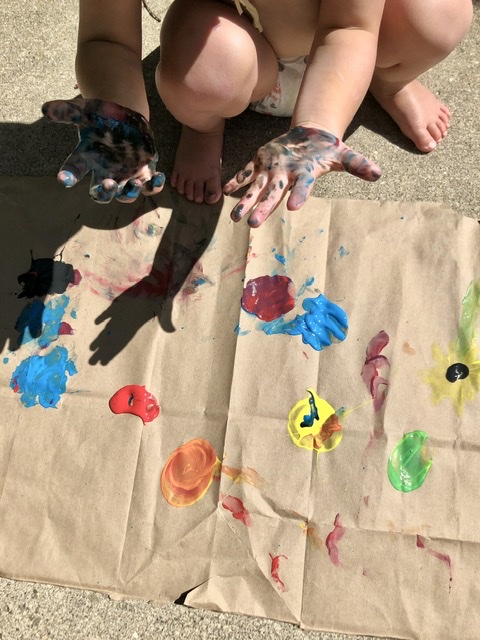
We’re talking finger paint, shaving cream, whipped cream, mud. You may want to do this outside or in the bathroom for easy clean up. When we get messy, kids think they’re doing something they aren’t supposed to. It’s so great! Put some mess on a surface- mirror, window, outdoor table, a fence, kiddy pool. Allow free play, but then incorporate drawing pictures or letters based on the child’s goals using a finger or whole hand. Consider drawing pictures that incorporate shapes, such as a stick person or a train. Create a scene together- a house with trees, flowers, a sun, and a car. Build upon her interests: Harry Potter, MindCraft, sports, tractors, trains and make shapes and pictures associated with these. If allowed, draw simple shapes or letters, or play Follow the Leader (“I’ll copy your drawing and then you copy mine”). But if the child is resistant, stick with free play and free drawings. This allows for a child to develop visual perceptual skills with a tactile experience. Her arms and hands are making the movements and her eyes are seeing the shapes come together. This is building her skills. AND it is building her interest and confidence.
This post contains affiliate links and I may receive commission when you click on links and make purchases. However, this does not impact the price you pay!
2. Create drawings within a play experience
This way, you aren’t “working on drawing”. Sometimes sitting down at the table with the crayons and paper is the worst part for kids. They immediately shut down.
-have a pad of paper for taking “dinner orders”, don’t stress over the actual writing, encourage pretend play, scribbling, or drawing pictures if letters aren’t there yet.
-create a scavenger hunt before going on a walk or hunt in the yard and have kids cross off items, check boxes, or write down what they saw.
-make special treats in the kitchen and have kids help with grocery lists
-use chalk outside, in unfinished basements, or on these foam mats. Create garage spaces for scooters, cages for zoo animals, hop scotch areas, or targets for throwing practice. Draw roads for his cars to drive on. Create towns and houses. Make railroad tracks for trains and dirt piles for diggers. Create a sea landscape and have her play a fishing game with a toy like this.
BONUS ACTIVITY: have her help clean up by spraying it with water and wiping it up. Hand strengthening and bilateral coordination also assist in the skill building of handwriting and coloring.
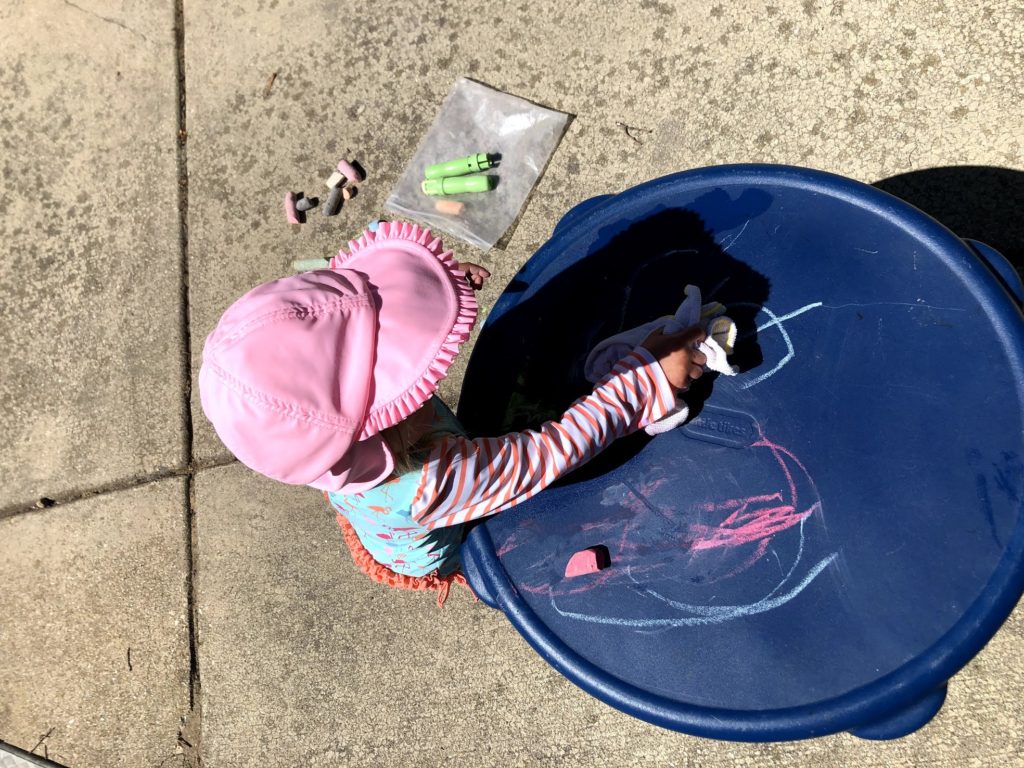
3. Use a visual schedule for certain activities in your day
And then make him cross off each item to get to the preferred task. This seems so simple, but it is one way that you can have the child you are working with engaged in activities that have NOTHING to do with writing, but then he is required to do a little bit of writing each time (pretty sneaky, eh??). Depending on the skill level, he can draw a line through the task when it is done, make an X over the number, place a checkmark in a box. If willing, you can have him help make the visual schedule and draw the boxes or numbers before each number, circle the numbers, or write or draw the item. For example, I do a visual schedule in almost all of my treatment sessions. Because A. transitions are hard! and B. we get a few more drawing opportunities. I can offer choices: “Do you want to draw the numbers or circle the numbers when I’m done?” “Do you want to draw the pictures of our activities, or cross them off when we’re done?” To make this more fun, use a small dry erase board that is designated only to this task. This feels so “official” for kids.
4. Use chunky, big coloring utensils
This makes coloring and scribbling soooo much easier for kids, which feels like less work and more fun. While you aren’t working on the fine motor component of holding a pencil, you are working on the visual motor piece, which is just as important. Here are some of my favorites:
–bingo dabbers or dot markers
-crayon balls or eggs
-chunky markers like these
-attach crayons or markers to other toys like cars and have them “drive and draw”, as seen in the picture below
-giant chalk because it’s hilarious. I’m talking the big ones. I think you could find these at a dollar store.
-adult sized paint brushes and paint outside. Get messy. Having an adult-sized tool feels pretty great to kids and it builds the strength in their small hand muscles.

5. Create shapes, letters or pictures with water play
Use squirt guns, spray bottles, empty condiment jars, paint brushes, snow balls, and ice cubes to draw with water outside or in unfinished basements or on play mats. Encourage trying to draw something and the other guesses what it is. This strengthens fingers, requires motor planning, and uses visual motor integration!
6. Get creative with 2-D and 3-D!
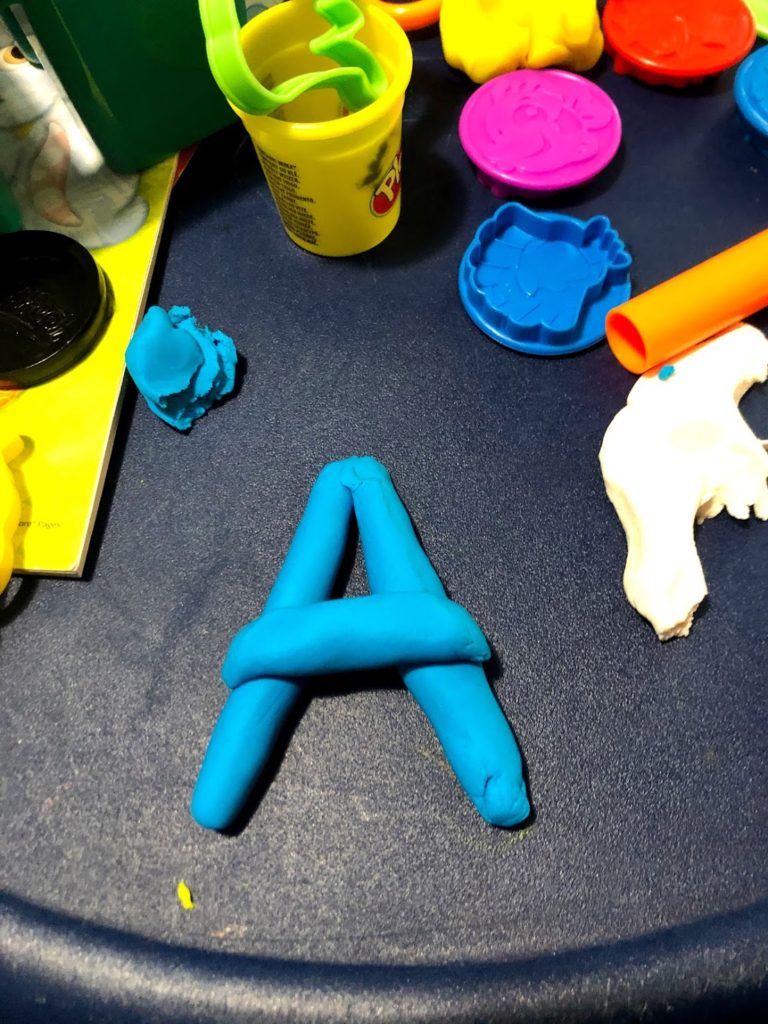
Create shapes and figures or letters out of play doh, clay, kinetic sand, popsicle sticks, pipe cleaners, Wikki Sticks. Create long rolls of clay and put them together to make the desired shape or letter. Working on letters? Make them with play doh instead of writing it. If he’s into it, encourage him to trace it with any utensil!
7. Build fine motor skills outside of coloring
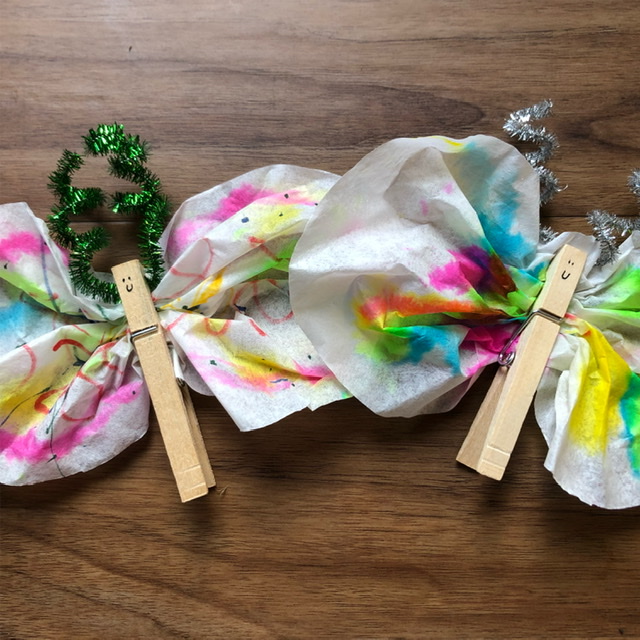
The following tools work on something called a pincer grasp or three-jaw chuck. It’s basically using the first one or two fingers with the thumb for precision. These are the early motor skills before kids develop the type of grasp that is necessary for a writing utensil. These activities work on this component of writing, without doing the activity. More fine motor activities to come, but consider these for now.
–eye dropper experiments- so FUN! Try the classic vinegar/baking soda in ice cube trays! Or make the above butterfly craft with coffee filters, clothespins, markers, and drip water strategically to make bleed! TIP: put something under the coffee filters when coloring with markers! We had the prettiest colors with highlighters.
-perler beads
-tweezers and tong play- use any small figurines of the child’s interests and sort
-stamps! I like these because they resemble a pencil and a child’s grasp on it will be similar.
-play any of these games: Pick-up Sticks, Kerplunk, Honey Bee Tree, Sneaky Snacky Squirrel. These all have a component of separating fingers of the hand, which help build fine motor skills!
8. And when your child can and is willing to write…
Try these prompts to make it more fun: If you could go anywhere in the world, where would you go and why? If you could have lunch with anyone, who would it be and what would you ask them? What do you want to be when you grow up? And many, many more here.
-get a pen-pal and write letters back and forth
-draw a picture and write a sentence about it
-write out wish lists (birthday, Christmas, Flag Day, whatever! your kid is writing!)
-write cards to neighbors, members in nursing homes, family, teachers, sports figures or whoever your child is inspired by
-play “Would you Rather?” and have children write the answers and you read them out loud
-try games like Pictionary, Telestrations, or even play charades where the child writes prompts.
When you work on these activities, engage with the child and use these experiences to talk about how he can translate the task into a coloring or writing task: “I like how you hold the pencil like you grabbed the pick up sticks!” “Let’s draw roads on this paper like we did in the driveway!” “You made an awesome A in the shaving cream, let’s draw one on this piece of paper so we can show Grandpa!”
When an activity is hard for a child, it is not motivating. She can’t get into her flow and certainly won’t want to sit down and practice it. We have to meet her where she’s at and give her opportunities to strengthen the skills that are fun for her. With improvements, they can see that there are some fun parts to drawing!
Please! Share your favorite writing activities when the child you’re with is unmotivated and uninterested in coloring/drawing.
Systematic Review of Interventions Used in Occupational Therapy to Promote Motor Performance for Children Ages Birth–5 Years
Effectiveness of a Handwriting Readiness Program in Head Start: A Two-Group Controlled Trial
Writing Readiness (Pre-Writing) Skills – Kid Sense
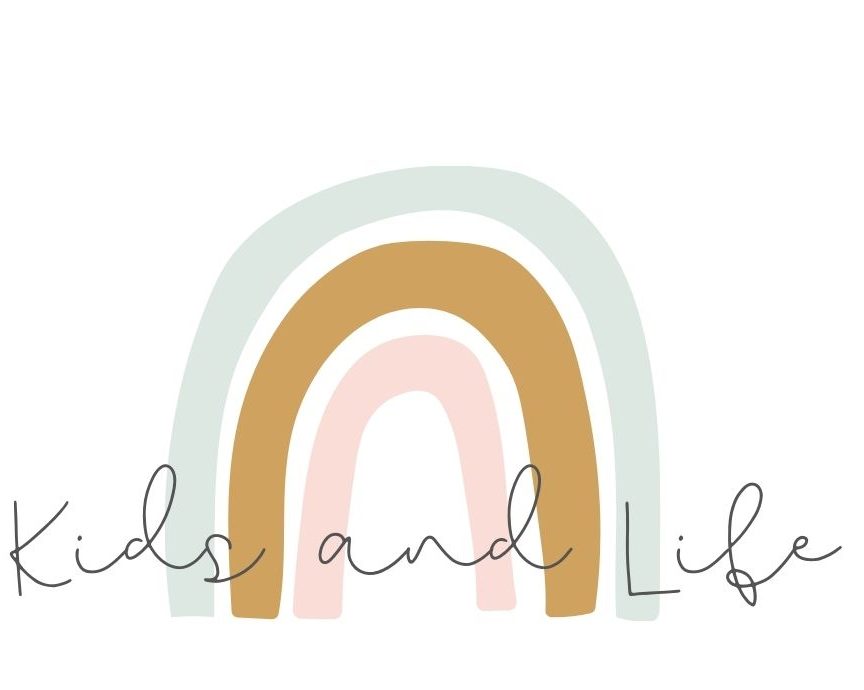
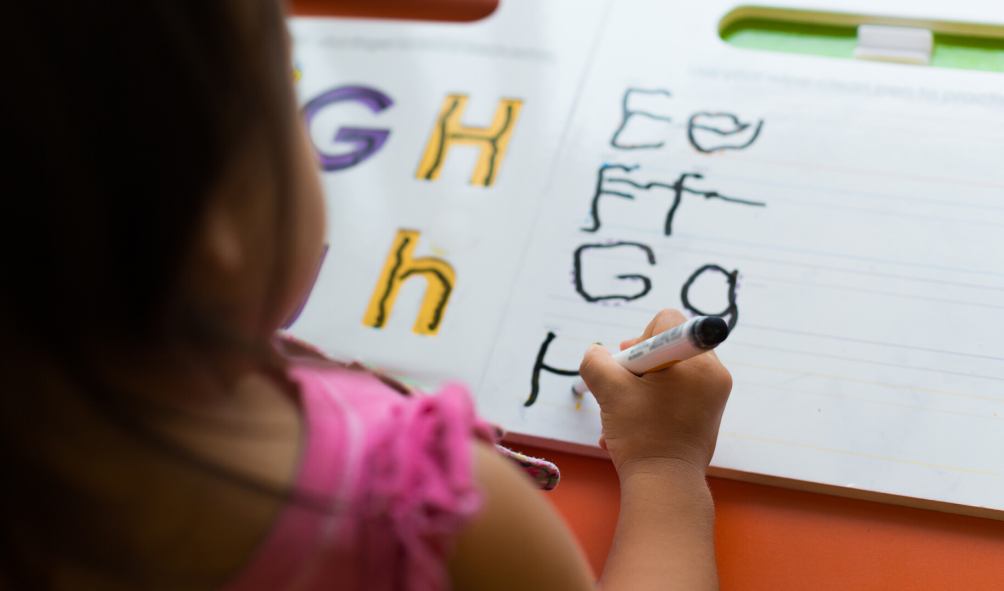
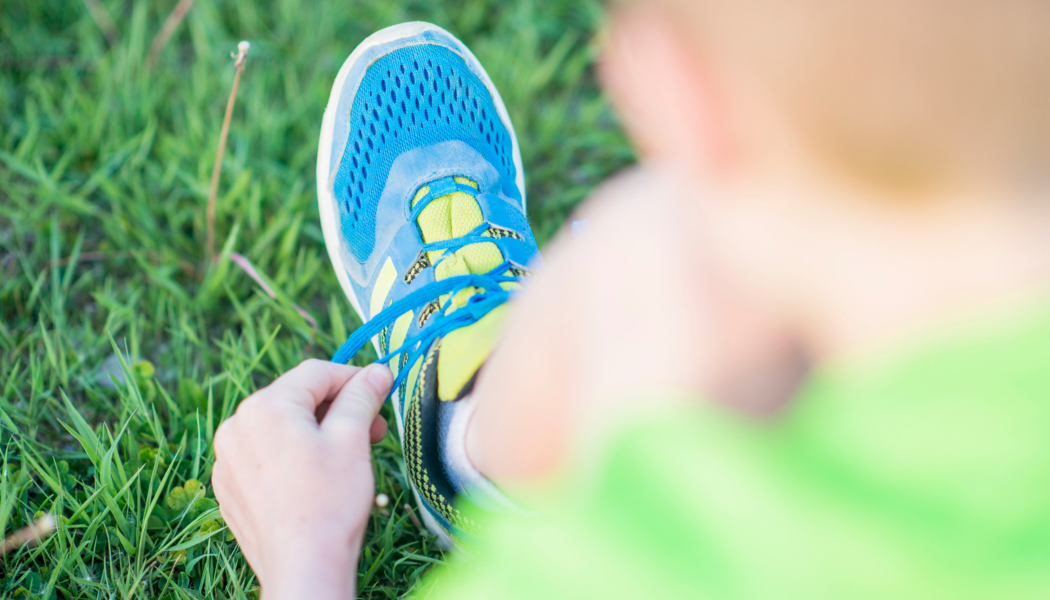
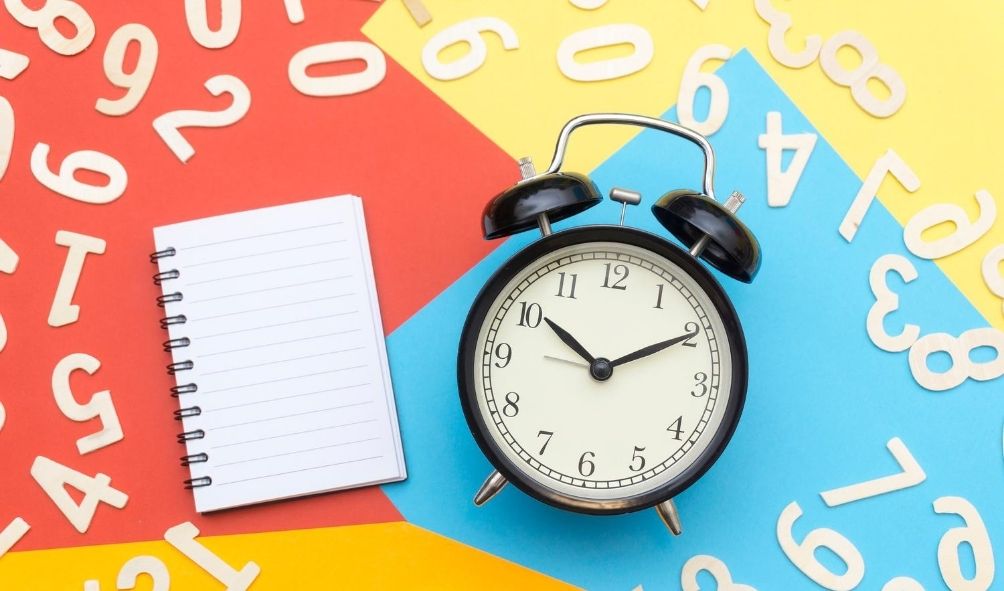

One thought on “Handwriting Support (when your kid hates writing/coloring/drawing)”